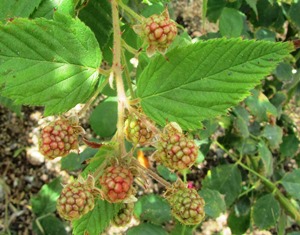Drought Hurts Honeybees, Too
The star thistle blooms in yellow bursts of color over the brown, drought-parched hills of the Bay Area during summer. Widely considered a noxious, invasive weed, the yellow star thistle’s blooms serve as a source of food for the honeybees during drought conditions when flower sources become scant.
While naturalists, government officials, land management people, ranchers, gardeners, farmers, and road and park maintenance workers consider the yellow star thistle challenging to control, others lament indigenous plants suffer or die because the yellow star thistle depletes the soil of moisture. Its one redeeming value appears to be as a food source for the bees.
Local beekeepers understand the value of the yellow star thistle during severe drought when water rationing in many counties mean few if any flowers are left blooming in August and September. While the plant’s nectar is great for the bees, it’s bad news for horses. Feeding on yellow star thistle over time can cause a horse malady known as chewing disease.
Also called St. Barnaby’s thistle and yellow cockspur, the yellow star thistle’s long tap root keeps it going while other plants around it die from lack of water. In Europe where the plant is indigenous, it is held in check by other plants that have co-evolved with it and by herbivores, the enemies of yellow star thistle. However, that’s not the case in the United States.
Since it was introduced to America in the early part of the 20th Century, the yellow star thistle has spread faster than a California wildfire and now covers some 15 million acres, just in this state alone. It is also considered a noxious, invasive weed in 35 other states. But the honeybees don’t care as long as there are enough of those yellow blooms to get them through the dog days of summer.
Get Ready for Blackberry Season
Southwest of the farmette lie the Santa Cruz mountains where blackberries grow wild. I know because I lived in those mountains and for many years hiked the environs of the mountain towns of Ben Lomond, Boulder Creek, Felton.
Nestle in the foothills, Los Gatos maintains Vasona Park where blackberries grow wild along the hiking/biking trail near a creek. I’ve been there several times this summer. Invariably, when I walk the trail in August or September and taste a ripe, freshly-picked blackberry, the sweetness and sprightly flavor evoke happy memories of summers past.
Our Henny Penny Farmette is located an hour and a half north of the Santa Cruz Mountains. Here we are situated in the shadow of Mount Diablo, but we have the kind of climate blackberries love. What is lacking is ample water that the plants need to thrive.
Blackberries require a deep soil and here we have clay (which can suffocate the berries because of the lack of good drainage the roots need). But we’ve helped the berries along by aerating and amending the soil with nutrients and with ground corn cob, aged horse manure, and compost.
Our trailing blackberries grow supported on a trellis. Use a two-wire trellis to avoid bending the canes too severely and to enable intertwining of the canes.
Last year, we planted a few of the semi-erect thornless berry vines. The Evergreen and Thornless Evergreen are commercial varieties and are extremely productive. The berries are large, black, firm, and sweet, pretty much perfect for eating out of your hand or using in a cobbler or pie. You can also make jam with blackberries alone or in combination with other fruits.
Some varieties can be so prodigious and hardy, adapting to the wild, that they are considered in some states and counties as noxious weeds, or pests. One species is the Himalaya cultivar. Its berries are shiny, black, about 1-inch long and the vines produce fruit with medium to large seeds. It quickly spreads and is difficult to control and eradicate.
The season for ripened blackberries is still a few weeks away, but watch for vines in the wild or plant some in your garden. Fall to spring is the best time for planting most berries.
Check with your local garden center for the right time to plant in your garden zone. Blackberries are perennial so the roots survive for many years, especially if the soil is loamy, well drained, and located in full sun to partial shade. For more information, see http://www.weeksberry.com/berryfiles/files/Blackberry.pdf.
 Facebook
Facebook Goodreads
Goodreads LinkedIn
LinkedIn Meera Lester
Meera Lester Twitter
Twitter



